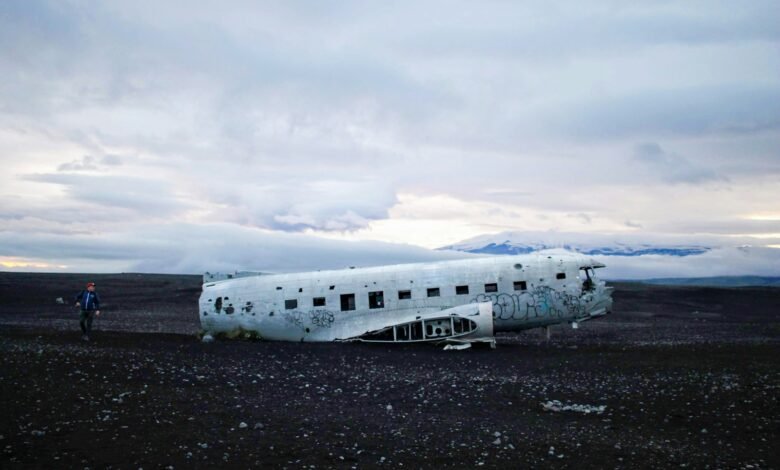
Hollywood often depicts plane crashes as fiery explosions, but real-life aviation disasters follow a more complex—and sometimes survivable—sequence of events. Using physics, engineering, and real crash data, this article breaks down what actually happens during a plane crash and why some passengers walk away while others don’t.
1. The Physics of Impact: How Forces Determine Survival
G-Forces: The Invisible Killer
-
A typical fatal crash involves deceleration forces of 50–100 Gs (vs. 3–5 Gs in a car crash).
-
Survivability depends on:
-
Impact angle (a shallow, controlled descent is better than a nosedive).
-
Seat position (rear seats often have higher survival rates).
-
Restraints (seatbelts reduce fatal injuries by 40%).
-
Crash Dynamics: The “Triangle of Death”
Most crashes occur in the final 3 minutes (takeoff) or 8 minutes (landing)—phases with low altitude but high pilot workload.
2. Structural Failure: How the Airframe Breaks Apart
Modern planes are designed to dissipate energy by crumpling:
-
Fuselage buckling: The cabin may split at stress points (e.g., near wings or doors).
-
Fuel tank explosions (rare post-impact due to flame-retardant additives).
-
Seat anchorage: Stronger seats reduce “submarining” (sliding under seatbelts).
Case Study:
-
Asiana Airlines Flight 214 (2013): Tail strike led to fuselage rupture, but 304/307 survived due to slow speed and effective evacuation.
3. Fire & Smoke: The Silent Threat
-
Post-crash fires cause ~40% of fatalities in otherwise survivable crashes.
-
Toxic fumes (cyanide from burning plastics) incapacitate passengers within minutes.
-
Modern fixes: Fire-resistant materials and floor-level lighting for smoke-filled cabins.
4. Human Factors: Why Some Survive and Others Don’t
The “Miracle” Survivors
-
Vulović Vesna (1972): Survived a 33,000-ft fall due to being pinned in the tail section.
-
Juliane Koepcke (1971): Survived the Amazon jungle crash by staying strapped to her seat.
Behavior Matters
-
Brace position: Reduces head/spine injuries by 40%.
-
Evacuation speed: 90 seconds is the critical window (delays increase fatalities).
5. Black Box Secrets: How Investigators Reconstruct Crashes
-
Flight Data Recorder (FDR): Logs 1,000+ parameters (speed, altitude, control inputs).
-
Cockpit Voice Recorder (CVR): Captures pilots’ last words and alarms.
-
Forensic analysis: Fracture patterns and burn marks reveal crash forces.
6. Could You Survive? The Odds Explained
-
Overall survival rate: ~95% (NTSB data for U.S. crashes, 1983–2000).
-
Worst-case scenarios: High-speed impacts (>200 knots) or deep-water crashes (e.g., MH370).
Survival Checklist:
✔ Sit within 5 rows of an exit.
✔ Count seats to the nearest exit (visibility may be zero).
✔ Wear shoes and fire-resistant clothing.
Conclusion: Why Air Travel Is Still Safest
While crashes are terrifying, aviation safety has improved dramatically:
-
2023 fatality rate: 0.11 per million flights (IATA).
-
Future tech: AI-assisted emergency landings and parachute systems (e.g., Cirrus Airframe Parachute).



